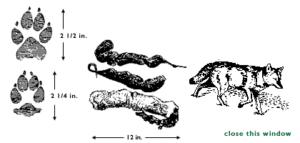-
Adopt
-
Veterinary Care
Services
Client Information
- What to Expect – Angell Boston
- Client Rights and Responsibilities
- Payments / Financial Assistance
- Pharmacy
- Client Policies
- Our Doctors
- Grief Support / Counseling
- Directions and Parking
- Helpful “How-to” Pet Care
Online Payments
Emergency: Boston
Emergency: Waltham
Poison Control Hotline
-
Programs & Resources
- Careers
-
Donate Now
Becoming comfortable around humans is dangerous for wildlife, so it is important to do everything we can to prevent that from happening. Thanks to a generous grant from the Nion Robert Thieriot Foundation, the MSPCA is proud to offer informational pamphlets on avoiding conflicts with coyotes at no charge to any Massachusetts municipality. Learn how to request these pamphlets. 
Life History
Coyotes are members of the canid family, which also includes foxes, dogs, and wolves. Eastern Coyotes moved into Massachusetts in the 1950s and are now found in every town across the state. At first glance they resemble German Shepherds in shape and size, and they are often mistaken for red or gray foxes.
The Eastern Coyote is larger than its western counterpart. They are typically 4–4.5 feet long (including the tail), stand 18–25 inches tall at the shoulder, and weigh 20–50 pounds. Their coats range from gray to brown to tan above, with lighter coloring underneath, and they have a straight, bushy tail.
Coyotes are highly adaptable and can live in settings ranging from suburbs to wilderness, and from sea level to over 10,000 feet in altitude. They are now found in every state except Hawaii. They are territorial, with males marking boundaries using urine as do other canids. Territory size depends on habitat quality and may span several square miles to support a single coyote family.
Coyotes are omnivorous, eating a wide variety of plant and animal foods. Their diet includes rodents, rabbits, birds, deer, insects, carrion, garbage, berries, and fruits. By preying on rodents, coyotes play an important role in maintaining ecological balance.
Coyotes breed in February or March and give birth in April or May. Litter sizes vary depending on environmental conditions and population density. Pups nurse for up to two months, become independent by about nine months, and may either disperse or remain with their family unit to help raise the next litter. In addition to family groups, some transient coyotes roam alone until they establish their own territory or replace an alpha in an existing group.
Possible Conflicts and Solutions
Generally, coyotes are shy and avoid people. In urban and suburban areas, however, coyotes may lose their natural wariness if they associate humans with food. Some may approach homes if food sources are available.
To reduce conflicts:
- Supervise children and pets outdoors.
- Secure trash containers and avoid leaving food outside.
- Feed pets indoors.
- Clean up spilled birdseed, which can attract rodents — and in turn, coyotes.
- Protect livestock with non-lethal strategies, such as noise, odor and visual deterrents, guard animals, and fencing.
If you encounter a coyote, do not run. Instead, practice coyote hazing: make loud noises, wave your arms, or throw small objects near (not at) the animal to restore its natural fear of humans.
Public Health
Like all warm-blooded animals, coyotes can contract rabies. If you suspect that an animal has rabies, contact your local animal-control officer.
Additional Information
- Project Coyote
- Coexisting with Coyotes
- Humane Conflict Resolution with Coyotes — Intruder Excluder
- Coyote Hazing (Humane World for Animals)
- Coyote Killing Contests

Coyote Tracks and Scat



